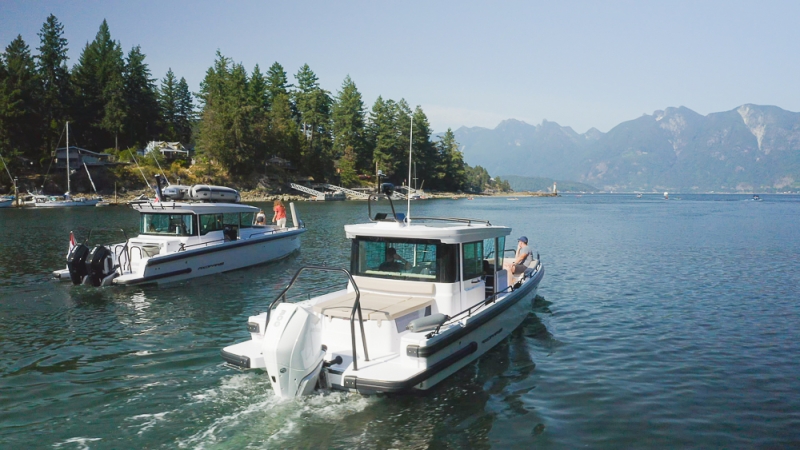Rules to Play By for a More Pleasurable Time on the Water
20th November 2023
For many the dream of cruising British Columbia’s coast centers on freedom, self-reliance, adventure, discovery, challenge, camaraderie, and plain old fun! There are four basic guidelines for safer, more enjoyable boating that serve mariners well when embarking on a journey. While each taken alone at face value may seem like obvious common sense, together they improve your odds strongly in favour of a more pleasurable time on the water.
These easy-to-remember guidelines may help you think through the underlying details associated with your own boat, crew, and cruise plans, resulting in safer, more pleasant cruising.

Weather Rules
On any bluebird, light-wind day and the seas are flat, practically anything that floats can be operated by just about anyone. Such conditions can change quickly, whether due to a developing onshore wind against an inlet’s outgoing current, or pop-up thunderstorm or an extensive squall line.
Weather information is available from a range of sources which provide reasonably accurate forecasts. The reality of forecasting is that, for the most part, they are synoptic, covering a large area; whereas the weather you might experience on a passage could be different due to very localized conditions. Be prepared for sea conditions that may be more unfavorable as forecasted, even on short hops. When in port and local forecasts are unfavorable, wait it out or make an informed judgement about a worst-case scenario relative to the capabilities and limitations of the vessel, you, and crew.
In summary, pick mild weather windows, avoiding unpleasant conditions. While this must seem obvious, it takes on deeper meaning when placed in context with the following three guidelines.
Vessel Limitations
One way to know many of the capabilities and limitations of your boat is to get hands-on with your boat’s maintenance. This enables us to learn about the boat and its systems and reduce surprise limitations by performing timely and correct maintenance. When something fails or is showing initial signs of failure, chances are you can usually detect and diagnose the problem quickly. It also helps to carry an inventory of spares, tools, and owner manuals for making either proper or temporary repairs for most problems.
If you are in the market to buy a boat, it’s always good to focus on understanding the capabilities of the vessel. Ask yourself what the boat can do or can’t do in various scenarios you might encounter and think them through, for example, how you want the boat to perform, crew safety and comfort, serviceability, back-up capabilities and maintenance. These include rough water, docking, walk-around safety, ease of boarding, comfort during inclement weather, engine parts availability.

Crew’s Capabilities
It’s extremely easy to be a good captain and have a competent crew when on the water in ideal conditions. The challenge comes when unexpected circumstances arise. A scenario to consider is if something happens to the captain, will the crew be able to safely operate the boat in all conditions? Similarly, it’s important to ensure they can call for help on the VHF radio, in the event of a life-threatening emergency.
It is the captain’s responsibility to ensure that the crew is ready for whatever they may reasonably encounter. Thinking through various scenarios can be a valuable tool for visualizing needs and taking appropriate preparatory steps.
Go-No-Go
To alleviate the temptation to go under unfavourable conditions to meet a deadline is extra time and a few extra weather days in the float plan to ensure cruising is during safe times.
No matter how you look at boating, whether as an adventure, relaxation, or anything else, it should be and can be all you want in terms of safety and comfort. These four guidelines are so simple and easy to remember and if followed they will pay rewarding returns in the form of greater enjoyment and peace of mind.


